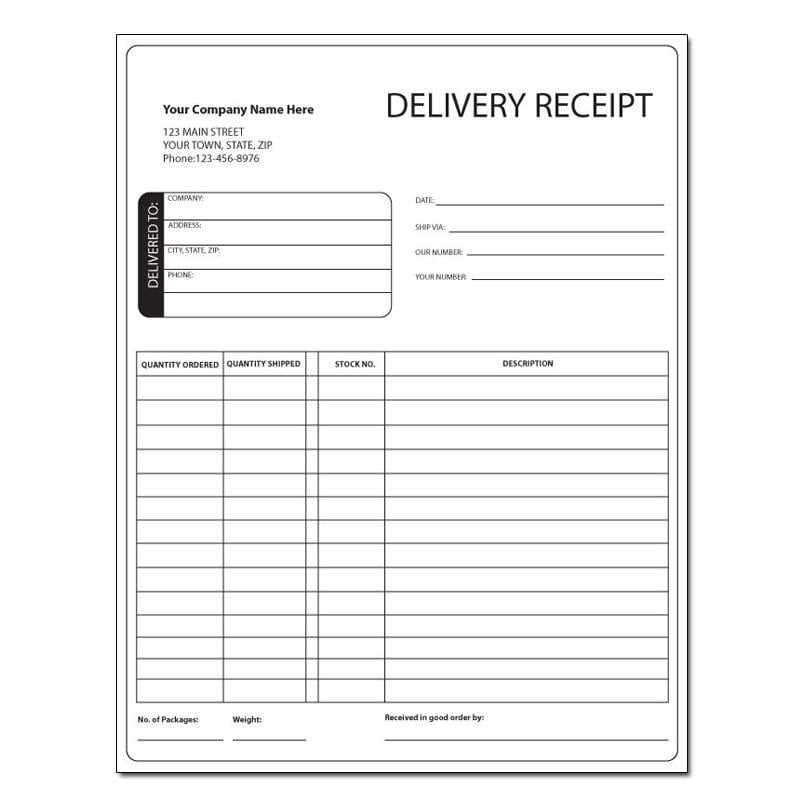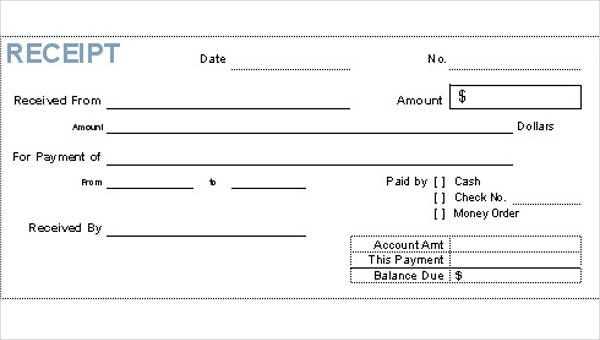
A consignment receipt is a document used to acknowledge the transfer of goods for sale, ensuring both parties agree on the terms and conditions of the transaction. Creating a clear, concise receipt prevents misunderstandings and can help with future disputes or audits. Here’s a simple consignment receipt template to follow.
Key Components of a Consignment Receipt

- Seller’s Information: Include the seller’s name, address, and contact details.
- Buyer’s Information: Include the buyer’s name, address, and contact details.
- Item Description: List the items being consigned with clear descriptions, including quantity and condition.
- Consignment Period: Specify the duration of the consignment agreement, including start and end dates.
- Sale Price and Commission: State the agreed sale price for each item and any commission or fees deducted from the sale proceeds.
- Payment Terms: Outline how the seller will be paid, whether it’s in installments or as a lump sum.
- Signatures: Both the seller and buyer should sign the document to confirm the agreement.
Template Example
Here is a simple consignment receipt template to customize for your needs:
Consignment Receipt Seller's Name: [Insert Seller's Name] Seller's Address: [Insert Seller's Address] Seller's Contact Info: [Insert Seller's Contact Info] Buyer's Name: [Insert Buyer's Name] Buyer's Address: [Insert Buyer's Address] Buyer's Contact Info: [Insert Buyer's Contact Info] Item Description: [Item 1: Description, Quantity, Condition] [Item 2: Description, Quantity, Condition] [Item 3: Description, Quantity, Condition] Consignment Period: [Start Date] to [End Date] Sale Price: [Item 1 Price] [Item 2 Price] [Item 3 Price] Commission: [Insert Commission Percentage] Payment Terms: [Insert Payment Method and Terms] Seller's Signature: ______________________ Buyer's Signature: ______________________
Best Practices

- Be Thorough: Include all item details and ensure the sale price, payment terms, and commission are clearly listed.
- Double-Check Information: Verify both parties’ contact details to avoid errors in communication.
- Keep Copies: Both the seller and buyer should keep a signed copy for reference.
- Review Agreement Period: Ensure that the consignment period is realistic for the type of items being sold.
By using a detailed consignment receipt, both parties can avoid confusion and streamline the transaction process, ensuring a smooth business arrangement.
Consignment Receipt Template: A Comprehensive Guide
Understanding the Purpose of a Consignment Receipt
Essential Information to Include in the Template
How to Format Your Receipt Correctly
Step-by-Step Guide for Customizing the Template
Common Errors to Avoid When Using a Receipt
Legal Considerations When Drafting a Consignment Document

A consignment receipt provides proof that goods have been handed over to a consignee for sale or storage. It serves as an important record of transaction terms and the conditions for returning or selling goods. This document is crucial for ensuring transparency between the consignor and consignee.
Include these key details when creating the receipt: the names and contact details of both the consignor and consignee, a description of the items being consigned, the quantity, and the agreed-upon price or terms of sale. The date of receipt, along with any other conditions, should also be clearly stated.
Proper formatting is vital for clarity. Start by placing the title at the top, followed by the consignment details, payment terms, and signature lines. Ensure there’s enough space for writing in case of updates, and structure the receipt so that each section is easy to identify and read.
To customize a consignment receipt, first input the names and details of all parties involved. Then, specify the consigned items along with their values or any commission percentages. If applicable, add return conditions or penalties for non-sale items. Be sure to leave room for signatures at the bottom to confirm the agreement.
Avoid common mistakes such as failing to list all consigned goods, overlooking signature lines, or not specifying clear return terms. Incomplete or unclear information can lead to disputes later.
Legal aspects to consider include ensuring that the consignment agreement complies with local laws regarding the sale of goods. Also, verify that the consignment document outlines the rights and obligations of both parties clearly, including the terms for unsold goods or disputes over sales.


